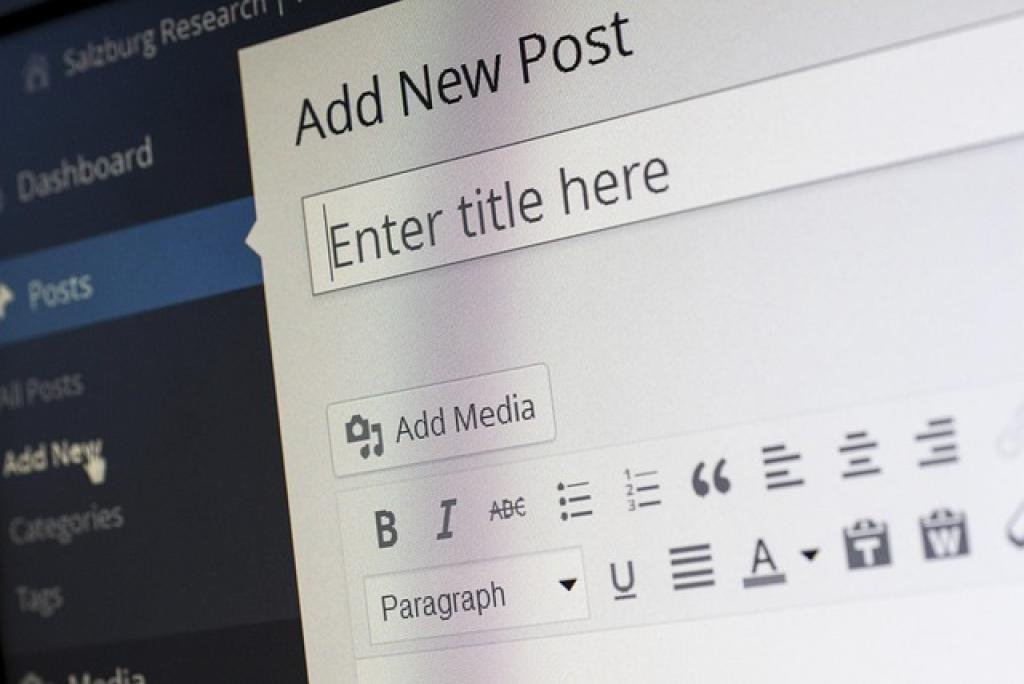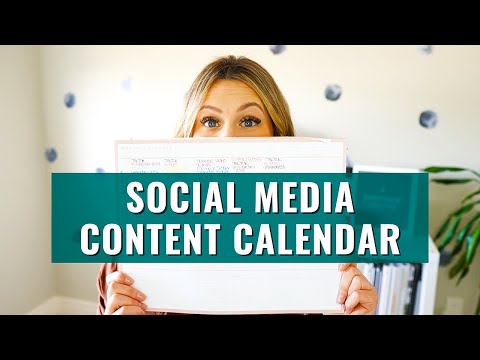Unlock the Power of Planning: Create a Blog Content Calendar That Drives Traffic

Have you ever felt overwhelmed by the ever-growing demands of creating blog content that not only engages but also drives traffic? You’re not alone.
Imagine having a roadmap, a tool that not only keeps you organized but also strategically aligns with your goals. Enter the blog content calendar—a game-changer for effective content management and growth.
With a blog content calendar, you can plot out your ideas, plan your publishing schedule, and ensure you’re consistently delivering content that resonates with your audience.
By being proactive rather than reactive in your approach, you’re setting your blog up for success. This meticulous planning can unlock your potential to reach a broader audience, increase engagement, and ultimately boost your blog traffic.
Let’s dive into how you can create a content calendar that is not just a plan but a powerful arsenal for your blogging prowess.
Why a Blog Content Calendar Is Essential for Driving Traffic
Imagine trying to navigate a city without a map. You might eventually find your way, but not without unnecessary detours and delays. A blog content calendar is your map, guiding you through the landscape of content creation.
Consistency Is Key
One of the foremost reasons for using a content calendar is ensuring consistency. Regularly publishing quality content builds trust and keeps your audience coming back for more. This steady flow encourages search engines to favor your site, improving your SEO performance.
Strategic Planning Pays Off
A content calendar also allows for strategic planning. You can align your topics with seasonal trends, industry events, or product launches, ensuring relevance and timeliness. This relevance not only captivates your audience but also optimizes your posts for maximum reach.
Efficiency and Focus
In light of this, a well-organized calendar enhances efficiency. It reduces the time spent brainstorming last-minute topics and minimizes the stress associated with deadlines. You can focus your energy on crafting truly compelling content.
Setting Clear Objectives for Your Blog Content Calendar
Before diving into your blog content calendar, it’s crucial to define what you want to achieve. Clear objectives provide direction and purpose, ensuring your efforts are impactful.
Understand Your Audience
Start by understanding your audience. Who are they, what do they want, and what problems can your content solve? Tailoring your objectives to meet these needs ensures your content resonates and engages effectively.
Define Success
Next, define what success looks like for your blog. Whether it’s increasing page views, boosting subscriber numbers, or enhancing engagement, having specific goals helps measure your progress and refine your strategy.
Align with Your Brand’s Vision
Your content should reflect your brand’s vision and values. Ensure your objectives align with broader business goals to maintain consistency and support your brand identity.
All these elements guide your calendar’s structure, helping you choose the right topics, schedule, and frequency. With clearly defined objectives, you can ensure your blog content calendar is not just a schedule—but a strategic tool driving success and growth.
Identifying Key Topics and Keywords to Target
Crafting impactful content begins with identifying the right topics and keywords. These elements ensure your blog reaches the right audience and competes effectively in search engines.
Research and Brainstorm
Start by researching trending topics and common questions within your niche. Tools like Google Trends, social media platforms, and industry forums can reveal what your audience is talking about.
When you find topics that resonate, it’s time to brainstorm related ideas that connect with your brand. This ensures your content remains relevant and engaging.
Keyword Strategy
Developing a robust keyword strategy is essential for SEO success. Identify keywords that align with your topics and have a good balance of search volume and competition. Use tools like Google Keyword Planner or SEMrush to pinpoint these opportunities.
Avoid the trap of only targeting broad terms; include long-tail keywords that cater to specific inquiries. These can help capture more targeted traffic and often have lower competition.
As you refine your list, prioritize topics and keywords that align with both your objectives and audience interests. This targeted approach ensures your content doesn’t just fill space but truly delivers value and drives traffic.
Establishing a Consistent Publishing Schedule
A consistent publishing schedule is the backbone of any successful blog, helping maintain momentum and engagement. It’s all about finding that sweet spot between frequency and quality.
Determine Your Capacity
First, assess your capacity. Be realistic about how often you can publish without sacrificing content quality. It’s better to post less frequently with high-quality content than to overwhelm your audience with subpar posts.
Consider Your Audience’s Habits
Understanding your audience’s habits can guide your scheduling. Are they more active during certain days or times? Align your schedule to match these patterns, increasing the likelihood of your content being seen when it’s posted.
Stick to the Schedule
Once you’ve established a schedule, stick to it rigorously. Consistency builds trust and anticipation among your readers, as they’ll know when to expect new content. This expectation can directly contribute to increased traffic and engagement.
In maintaining discipline with your schedule, you’re setting a foundation for content that’s not only frequent but also eagerly anticipated by your audience. This regularity establishes your blog as a reliable source of information, fostering loyalty and growth.

Utilizing Analytics to Refine Your Blog Content Calendar
To ensure your content calendar remains effective, regularly tapping into analytics is essential. Data-driven insights allow you to refine your approach and adjust to your audience’s evolving needs.
Start by analyzing which posts are driving the most traffic. Look beyond the numbers to identify patterns in topics, formats, and keywords that resonate well with your readers. This information can be a goldmine for future content planning.
Also, pay attention to engagement metrics like time on page, bounce rate, and social shares. These can reveal how your audience is interacting with your content and pinpoint areas for improvement. If certain posts have higher engagement, consider creating similar content or exploring additional angles on the same topic.
Don’t forget to evaluate the performance of your publishing schedule. Check if certain times or days yield better results and adapt your calendar accordingly.
Regularly reviewing these analytics ensures your content calendar is a dynamic tool, evolving with your blog’s growth and audience preferences. This approach not only maximizes traffic but also enhances overall reader satisfaction, keeping your blog relevant and successful.
Engaging with Your Audience Through Strategic Planning
Strategic planning isn’t just about creating content; it’s about fostering a genuine connection with your audience. Engaging your readers effectively can transform casual visitors into loyal followers.
First, integrate audience feedback into your planning process. Regularly invite your readers to share their opinions, suggestions, and criticisms. Use this feedback to shape your content and ensure it meets their needs and expectations.
Incorporate interactive elements like polls, Q&A sessions, or comment discussions in your posts. These elements encourage active participation and show your audience that their voice matters.
Personalization is key. Tailor your content to address specific challenges or interests of your readers. This tailored approach makes your content feel more relevant and valuable, which can significantly enhance engagement.
Social media is another powerful tool for building engagement. Share your content across platforms, and interact with your audience by responding to comments and messages promptly.
By making strategic planning a two-way conversation with your audience, you create an inclusive community around your blog. This engagement not only helps drive traffic but also builds lasting relationships with your readers.
Collaborating with Your Team for Content Calendar Success
Collaboration can transform your content calendar from a simple schedule into a creative powerhouse. Bringing your team together ensures diverse ideas and perspectives enrich your content strategy.
Share a Unified Vision
Start by ensuring everyone on the team clearly understands the goals of the blog. Sharing a unified vision keeps all efforts aligned and focused on common objectives, making the execution seamless.
Encourage Open Communication
Regular check-ins and brainstorming sessions foster open communication. Encourage all team members to share their insights and suggest ideas, creating a dynamic and inclusive planning environment.
Assign roles based on each team member’s strengths and expertise. Whether it’s writing, editing, or visuals, allowing individuals to focus on their strengths can enhance the overall quality of your content.
To keep the workflow smooth, implement project management tools like Trello or Asana. These tools help manage deadlines, track progress, and ensure everyone knows who is responsible for what.
By fostering a culture of collaboration, your team can maximize the effectiveness of your content calendar. This teamwork not only elevates the quality of your content but also boosts morale, driving your blog’s success collectively.
The Bottom Line: Maximizing Traffic with a Well-Planned Blog Content Calendar
In essence, a well-structured blog content calendar is more than just an organizational tool; it’s a strategic asset. By investing time in planning, you’re setting the stage for consistent, engaging, and impactful content that resonates with your audience.
Creating a content calendar begins with setting clear objectives. By understanding your audience and aligning your content with their interests, you can produce material that keeps them engaged and returning for more.
Topic and keyword identification are crucial for making your blog discoverable. Pair this with a consistent publishing schedule to build trust and anticipation among your readers, a cornerstone of successful traffic growth.
Integrating analytics into your strategy ensures your calendar stays relevant. With insights from data, you can refine your approach, ensuring every post contributes to your overarching goals.
Engagement is equally vital. Strategic planning opens the door to meaningful interactions and relationships, transforming casual readers into dedicated followers. By focusing on engagement, your content becomes more than just words—it becomes a community experience.
Finally, don’t underestimate the power of collaboration. A united team effort can bring varied perspectives and expertise, elevating your content’s quality and appeal.
In summary, a well-planned blog content calendar is your pathway to maximizing traffic and achieving sustained growth. With careful planning and consistent execution, your blog can become a valuable resource in your niche, fostering a vibrant and loyal audience.



